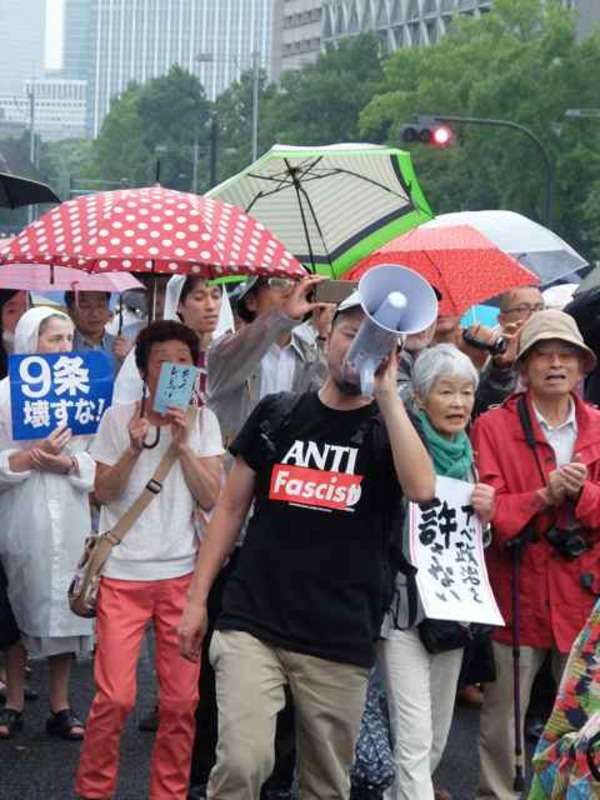Japan’s Controversial Militarization and National Security Legislation: Student Movement Slams Prime Minister Abe’s Assault on Constitution
The Student Emergency Action for Liberal Democracy (SEALDs)

Team Abe keeps saying it will try to gain public understanding of its controversial security legislation, but there are few signs that it is winning anyone over. The massive youth-led demonstration in front of the Diet on August 30, widely reported as involving more than 120,000 Japanese spanning the often-divided liberal spectrum and involving all generations, is a sign of the times.1
Demonstrators loudly denounced Prime Minister Abe Shinzo as a threat to peace and the constitution while some signs depicted him as a warmongering fascist tyrant and puppet of Uncle Sam.
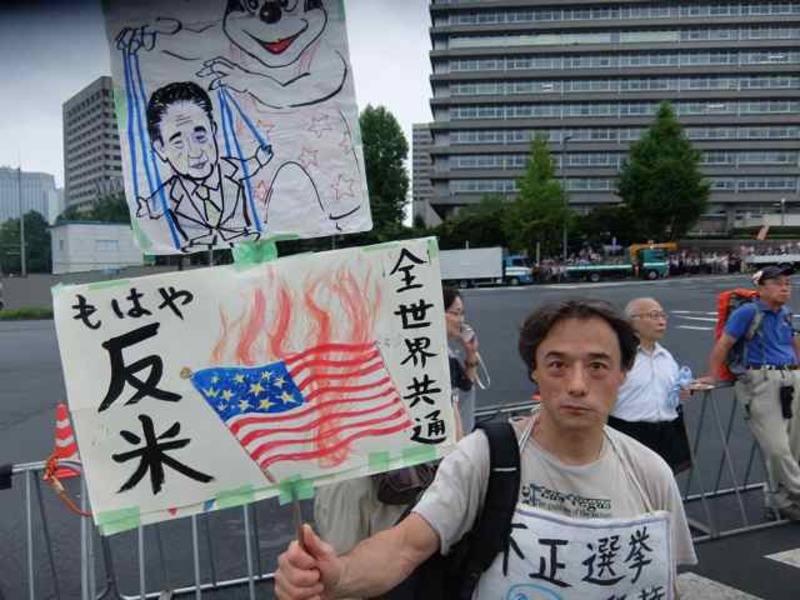
|
Although NHK’s 7 PM News declared it Tokyo’s largest demonstration, the program devoted far more time to an investigation into faulty plastic stools! This marks a mild improvement over the news blackout in 2011 when NHK ignored a massive anti-nuclear rally in Yoyogi Park just across the street. It also ignored the self-immolation of a middle-aged man protesting on the eve of Abe’s cabinet reinterpretation of Article 9 on July 1, 2014.
Since that grisly spectacle, strong public opposition to Abe’s security legislation has spilled out on to the streets of Tokyo, an encouraging sign in Japan’s otherwise dispiriting political scene. Students are in the vanguard of this movement and they are attracting throngs of Japanese who share their sense of outrage about Abe’s trampling on Japan’s Constitution and pacifist norms.
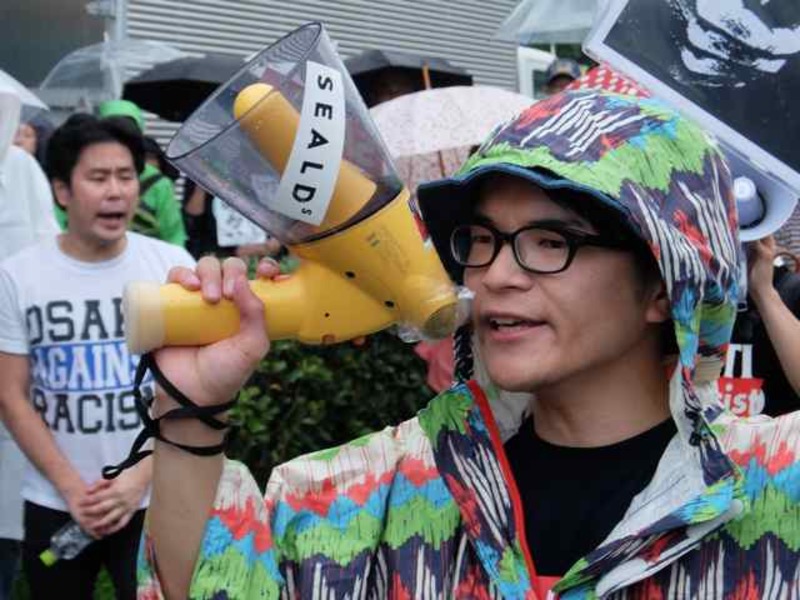
|
SEALDs
The quixotic Student Emergency Action for Liberal Democracy (SEALDs) has served as an inspiration for the nation, organizing demonstrations and arousing and instigating political engagement extending well beyond university undergrads.
SEALDs are part of a post-3.11 continuum of protests by citizens angered by the Fukushima nuclear reactor meltdowns, Abe’s 2012 secrecy legislation that undermined transparency, accountability and democratic values, government inaction in the face of racist assaults on the rights of resident ethnic Koreans and rightwing vigilantism targeting the liberal media that in 2014 Abe publically applauded in the Diet.
SEALDs was launched on May 3, 2015, Constitution Day, highlighting the group’s concerns that Abe’s security legislation is tantamount to a stealth revision that fails to adhere to proper constitutional procedures. The core members of SEALDs belonged to the Students Against Secret Protection Law (SASPL) that protested Abe’s secrecy bill from February to December of 2014. That legislation passed, but they were aroused by the Abe Cabinet’s decision on July 1, 2014 to autocratically reinterpret Article 9 of the Constitution to allow Japan to exercise the right of collective self-defense. Promoting such a radical shift in Japan’s security policy without following procedures laid out in the Constitution for revising the constitution spurred the students to take to the streets to preserve constitutionalism.
Launched in Tokyo and Kansai, SEALDs has since blossomed into a nationwide network with branches in Ryuku (Okinawa), Tohoku and soon Tokai, with an estimated 400 core members and far more loyal adherents and supporters who regularly participate in protests, but are not formally members. Core members organize the demos, produce leaflets and posters, handle the media, and organize and run study groups. Its still early to speak of a new social movement, but it does seem to be a success in terms of mainstreaming political activism and making it seem unthreatening to the public while giving a voice to the majority who are incensed by Abe’s steamrollering his security agenda through the Diet.
Robin O’Day, a researcher at Tsukuba University, says that key core members from Meiji Gakuin, International Christian University, Sophia and Hosei, among the centers of activity, all attended the same high school. A number of these are historically Christian Universities. However, Meiji Gakuin’s Tom Gill cautions against reading too much into this Christian connection. He points out that his university has an active Peace Studies Institute and “…a liberal-left tradition. Partly it stems from being a Protestant mission school. Christianity tends to be associated with conservatism in countries where it dominates, but with progressivism where it is a minority faith.” “Few of the faculty and very few of the students are actually Christians,” he adds, “but a little bit of the crusading spirit of Kagawa Toyohiko, a pioneering social activist and famous Meigaku graduate, has somehow lingered on.” In contrast to the 1960s Ampo student movement, leading national public universities such as Tokyo University and Kyoto University have not played leadership roles.
So what does SEALDs reveal about contemporary Japan? Certainly the students challenge the prevailing negative stereotype that youth today are politically apathetic, disengaged and happily retreating into the virtual world. They are a small vanguard that taps into SNS to amplify their influence and mobilize sympathizers to join in demonstrations.
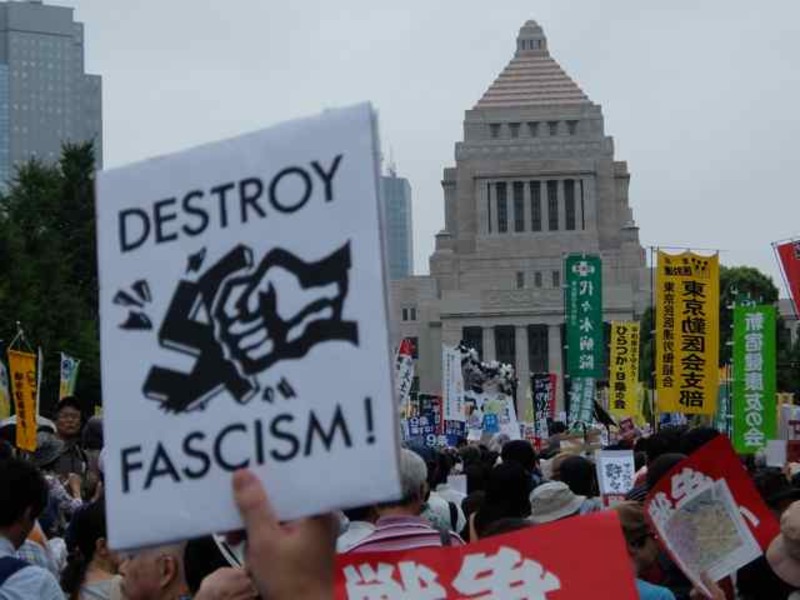
|
Mainstreaming Street Politics
Taking advantage of what Sophia University’s David Slater calls a perfect storm of opportunity, SEALDs is tapping into mainstream anxieties about Abe’s overall agenda. Slater, and his research colleague Robin O’Day, have been tracking SEALDs from the outset through an ethnographic project they call “Voices of Protest Japan” (coming soon), interviewing all the core members and amassing reams of data.
O’Day says they are impressed with the resilience and adaptability of the movement, defying expectations that it might run out of steam.
The large and loud crowds that regularly gather outside the Diet on Friday evenings are the result of student activists trying to do something constructive to block Prime Minister’s Abe’s security legislation. The core activists in Students Emergency Action for Liberal Democracy (SEALDs) say they want to protect Japan’s liberal democratic values and promote constitutionalism. SEALDs is wooing a public that shuns radicalism and extremist actions meaning no leftist jargon, Molotov cocktails, police confrontation or hunger strikes. There is a sense that the more confrontational style of protests and political agitation in the 1960s played into the government’s hands, enabling it to portray activists as extremists and deny the movement broader public support.
Okuda Aki, a 23 year-old student at Meiji Gakuin and founder of SEALDs, insists, “If one government can change things just with their interpretation, then the Constitution itself is altered and the government can do whatever it wants.” Like many other SEALDs members, Okuda is often seen sporting a T-shirt emblazoned with “Destroy Fascism”. While acknowledging that the conservative forces of darkness are well entrenched, Okuda understands the unrelenting power of ideas in action. “This is not a top-down movement, mobilized by the leaders of certain groups. No one can stop people who have begun to think and take action.”
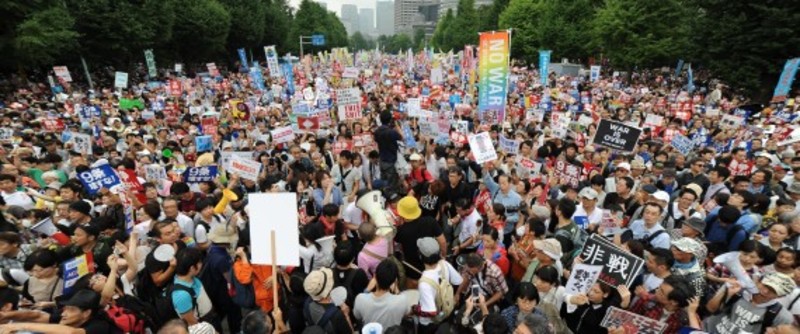
|
SEALDs moderate manifesto stands in contrast to the Marxist ideology of the 1960s protestors, urging respect for the Constitution, liberal democratic values and existing security policies while also calling for improving the social safety net, positions that enjoy broad public support.
Hosei University’s Yamaguchi Jiro says, “It is the first movement that has no connection with left parties or political organizations. They are spontaneous, and their words are fresh.” ”Their amateurism has inspired ordinary citizens, and made them feel they should do whatever they can do to prevent the Abe administration from imposing the new security legislation.” He adds, ”It is a big surprise for me that the Japanese people still have such a strong attachment to the Pacifist Constitution.”
Ogawa Akihiro, the Chair of Japanese Studies at the University of Melbourne, has been studying 21st century protest movements in Japan, noting that “During SEALDs’ protest demonstrations, I often heard three major calls: “Kenpō Mamore! (Protect the Constitution), Abe wa yamero! (Abe, Quit), Sensō suruna! (Don’t make war).” In his view, SEALDs drew inspiration from the political ferment of the past five years sparked by the Fukushima meltdowns and Abe’s reactionary agenda and “tyrannical attitude”.
Ritsumeikan’s Honna Jun draws parallels with the pro-democracy youth movements targeting entrenched interests elsewhere in Asia including Hong Kong, Taiwan and Indonesia, “effectively using social media to gain inspiration, organize events, recruit people, and expand networks.” In his view,” SEALDs is a very important new student activism long waited in Japan’s political process. It is new because the movement is non-partisan and is not ideology-oriented.”
Ogawa points out that, “Members of SEALDs do not necessarily disagree with any revision of the Constitution; what they want is politics based on ‘constitutionalism’ or rikken shugi.”
Tom Gill, the Meiji Gakuin anthropologist, adds, “The other half of the story is the marked shift to the right by the LDP under Abe, which has prompted the revival of a long-dormant tradition of student radicalism.” SEALDs, he reminds us, “ is campaigning for freedom and democracy, not communism or anarchism. They feel more left wing because the establishment has become more right wing.”

|
Sophia University’s Nakano Koichi says, SEALDs is “trying to build a new political culture”, what Slater and O’Day call “the politics of the regular”. Nakano says they are consciously seeking to mainstream their message to reach a wider audience because “the Japanese public is allergic to extremism and shuns the radicalism of the 1960s.” SEALDs wants to normalize political engagement and activism, drawing on the recent experience of Taiwan, Hong Kong and Occupy Wall Street while interacting with like-minded organizations and counterparts all over the world.
The goal, according to Nakano, is “not having to be a full-time radical activist to engage in street politics…its supporters are regular students who plan to lead regular lives and who want political engagement to become a new norm in Japan, similar to western democracies.” Cynics will no doubt be muttering “good luck with that”, but as Kimijima told me, “Their naiveté and enthusiasm encourages and inspires people who have given up trying.” Sure they make mistakes and its easy to second guess their tactics and agenda, but because they are not jaded by defeat, “unlike the old, they don’t hesitate to act…this is their strength,” he adds.
Staking out the middle ground has also drawn criticism from some older leftist groups who disparage SEALDs’ moderate tactics, a sniping that Nakano likens to “Getting bullets from behind”. Slater disagrees with those who denigrate SEALDs as, “more sheen than substance, more fashion than politics.” Adding,” I think these critics are missing the point. SEALDs have gotten more people from a wider demographic onto the streets and aware of the issues. That they don’t look like the old or new left—all the better. Maybe they will succeed where others failed.”
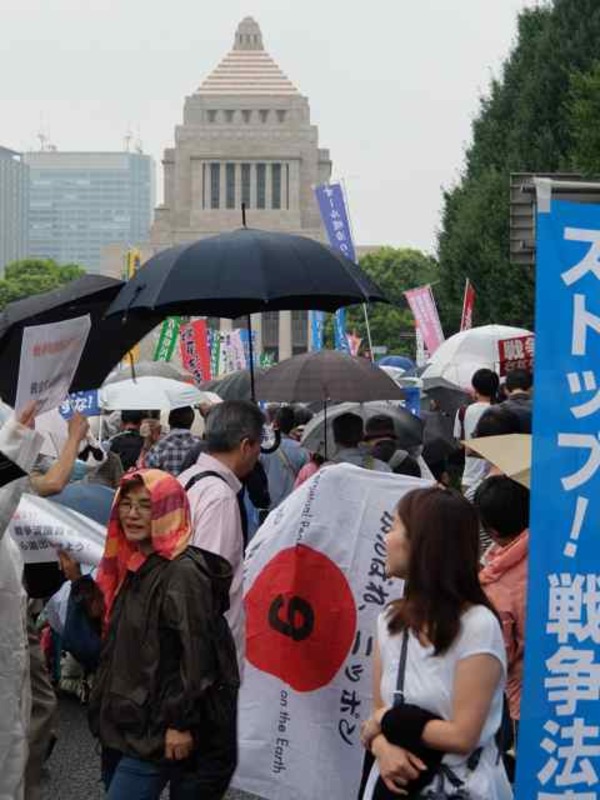
|
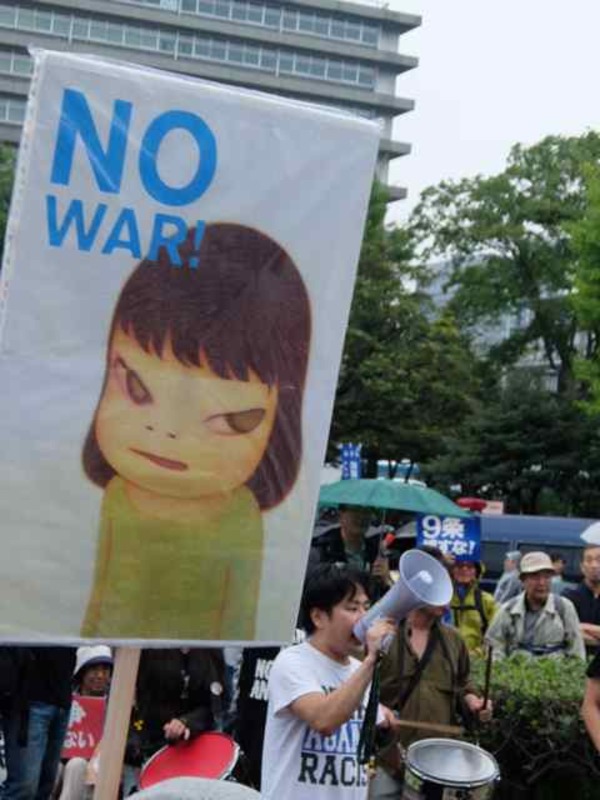
|
Rebooting Pacifism
SEALDs focus is on Abe’s disregard for the Constitution, but its agenda is clearly pacifist. Ritsumeikan’s Kimijima says that SEALDs wants Japan to be a nation based on the rule of law, and believes that Abe is flouting the Constitution, the supreme law of the land. Apparently, there is no shortage of Japanese who agree with them.
This past June in the Diet, eminent constitutional scholars dismissed Abe’s security legislation as unconstitutional, putting wind in SEALDs sails. Since then, almost all of Japan’s constitutional scholars have joined in condemning Abe’s putsch as did a former Supreme Court justice and a number of ex-directors of the Cabinet Legislative Bureau, the bureaucratic entity that screens bills to determine their constitutionality. The LDP continues to cite the 1959 Supreme Court decision on the Sunakawa case to justify its legislation allowing Japan to exercise the right of collective self-defense, but as law professor Lawrence Repeta points out, “the Sunakawa decision did not address collective self-defense at all.” Lawrence Repeta, “Japan’s Proposed National Security Legislation — Will This be the end of Article 9?” The Asia-Pacific Journal, Vol. 13, Issue. 24, No. 3, June 22, 2015.
In July, Muto Takaya, at the time an LDP Diet member, arrogantly disparaged SEALDs for being selfish and pacifist. He has since resigned from the party following allegations of financial and sexual misconduct, but his comments sparked a backlash. Kimijima points out that young Japanese volunteers working at NGOs all over the world have made significant contributions to building peace in war-torn countries, a far more effective example of proactive pacifism than PM Abe’s militarized version. These young people and the SEALDs activists, he argues, draw on the pacifist inspiration of Japan’s peace constitution and are dedicated to promoting “peace by peaceful means”, an approach that resonates powerfully worldwide and within Japan. But not in the Diet it appears.
Outside the Diet at the August 30 rally I met a number of disgruntled Komeito members who are appalled at their leadership for abandoning the party’s core pacifist principles and caving into Abe. I also met activists associated with local housewives associations, Christian groups, various unions and also the student organization Zengakuren, all expressing opposition to Abe’s attack on Japanese pacifism and expressing solidarity with SEALDs. Inspired by SEALDs, Mothers Against War (Mama no Kai) has also joined protests, circulated petitions and directly lobbied Diet members. There is also a SEALDs junior for high school students, TNS-SOWL, which regularly participates in SEALDs protests. At the massive rally I met some septuagenarians and octagenarians, self-designated groups of MIDDLEs and OLDs, and many participants who appeared unaffiliated, but eager to denounce the pronounced rightward shift in Japan’s conservative political establishment.
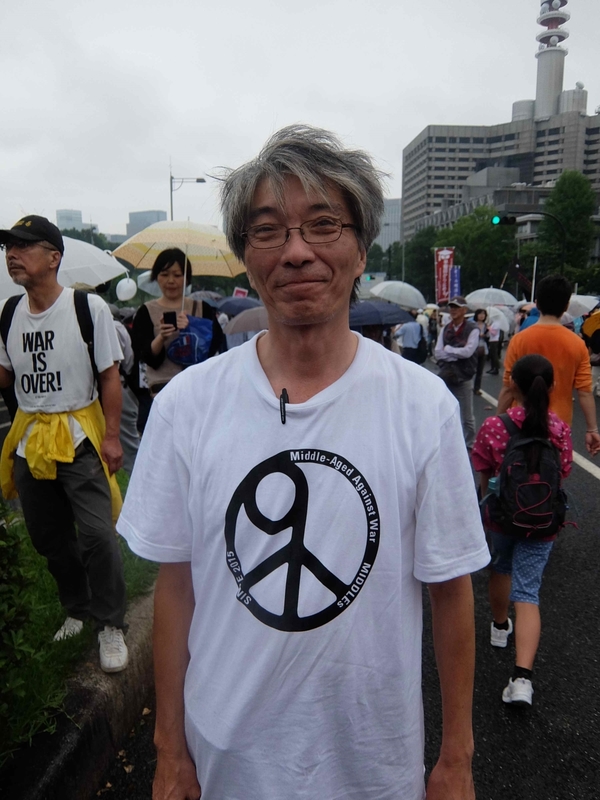
|
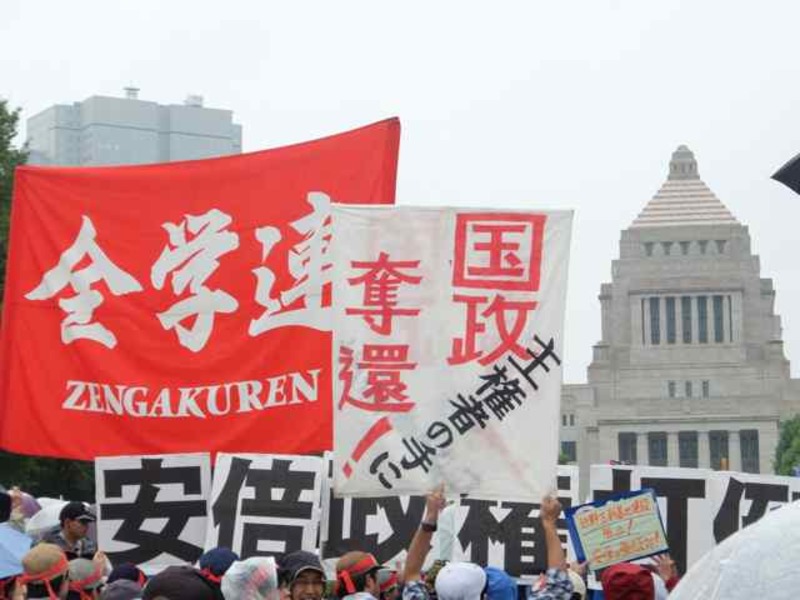
|
It is also clear that Japan’s scholarly community supports SEALDs in its efforts to protect the constitution against Abe. Reading the list of signatories to the appeal circulated by the Association of Scholars Opposed to the Security-related Bills, one quickly understands why Team Abe has proposed eliminating humanities and social sciences programs at national universities, although some natural scientists are also among the signatories. In their view Abe, is undermining the rule of law and flouting the constitution. Ironically, Abe’s Defense Minister, Nakatani Gen, wrote a few years ago that revising the Constitution by reinterpretation and legislation would lack legitimacy. That is exactly the policy he is now tasked with spearheading. The scholars warn that somehow, sometime, somewhere, Japan will be dragged into an American-instigated war at Washington’s behest and regard Abe as endangering the nation in order to promote his reactionary agenda.
On September 6 these scholars and SEALDs jointly staged a large rally in Shinjuku. The membership includes nearly 14,000 scholars, and almost 30,000 supporters, with associated groups at some 100 universities. The number of protestors was about 12,000, thronging the main thoroughfare, where crowds gathered to hear speeches and show solidarity. Sophia University’s Nakano Koichi says that SEALDs has asked scholars for suggestions on reading lists and some professors are participating in study sessions, a collaborative effort aimed at contextualizing protest activism in the arc of Japanese history and the wider global discourse.
SEALDs links with other activist groups are extensive. One observer told me that “Tokyo Democracy Crew (TDC) has ceded the spotlight to the more youthful SEALDs, and these days they are assisting SEALDs from behind the scenes. They play vital roles, but they don’t seek attention.” Others suggest that TDC also helps with security by monitoring the crowds, keeping things peaceful and removing saboteurs. In addition, the Japan Federation of Bar Associations remains politically engaged in its own right, but also provides legal advice to SEALDs.
|
Tokyo Democracy Crew |
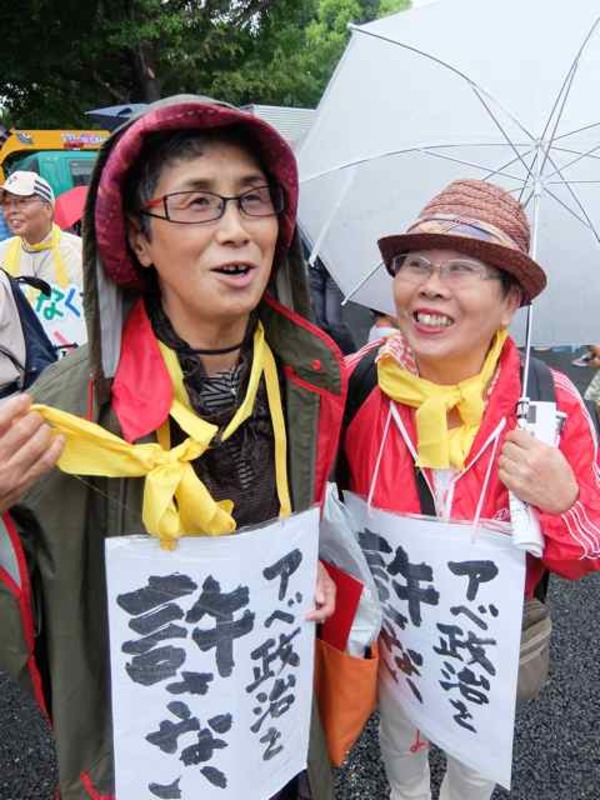
Women from Saitama give Abe a yellow card |
Nakano explains, “Number-wise, the ‘old school’ pacifist groups and labor unions, called Sogakari, which are now united across the traditional political divide, remain the greatest. Sogakari organizes the weekly Thursday protests, whereas SEALDs organizes the weekly Friday protests. In the week of the Lower House vote, every day Sogakari started the protest earlier in the day, and SEALDs took over later in the evening. Similarly, in the week of the expected Upper House vote starting on September 14, the same is likely to happen.”
Media Savvy
SEALDs cooperates with the media by holding press conferences, offering interviews, and orchestrating eye catching events that attracts readers and boosts television ratings. They appear polite, thoughtful and articulate, cultivating a reassuring image that makes their rightist detractors appear more unhinged than usual. They have also wooed the international press, knowing that fame abroad can translate into legitimacy and coverage at home. It almost seems professional, but strong self-presentation and multimedia skills come naturally to 21st century youth.
It is striking just how media savvy SEALDs is with an English acronym, provocative placards in English, a handsome and effective English language website, and good looking youth swaying to the drums while belting out tuneful chants. Meiji Gakuin’s Tom Gill says a member told him that the idea of adopting an English acronym, “was to make themselves more identifiable to international media” on the premise that “getting mentioned abroad is a good way to get local media to start taking you seriously.” Regarding their deft media presence he says, “they are just applying the on-line practices of their personal lives to political ends.”
On its website SEALDs displays a cool coat of arms, with a quadrant depicting a book, a quill, a megaphone and headphones with a play button icon in the center, demonstrating a canny sense of branding. Some reactionaries threaten that demonstrators will have a tough time job-hunting, but ad agencies and any firm looking for inspired, resourceful and skillful workers ought to beat a path to their doors.
Nakano notes that older leftists complain that ordinary Japanese don’t understand the pithy English placards, but SEALDs embraces a cosmopolitan outlook, connecting threats to Japanese democracy and constitutional government to global developments. At recent protests I asked some older people about the SEALD sign they were holding, “I can’t believe I’m still protesting this shit.” It seems they fully understood and approved the gist of the message taking its place in a sea of “No War” and “Protect Article 9” signs.
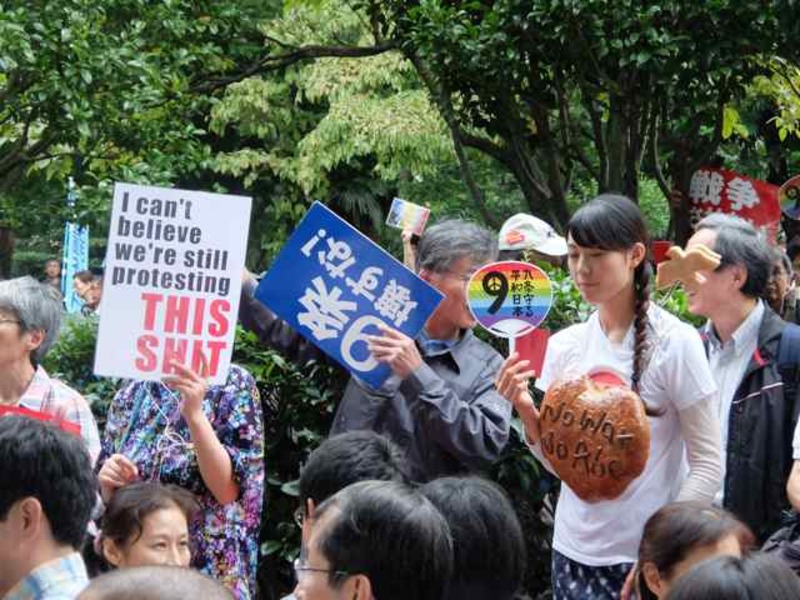
|

|
Sustainability?
Given that Abe’s security legislation is a done deal in the Diet, what comes next for SEALDs? It seems there is a target-rich environment for liberals and progressives eager to defend democracy and constitutionalism in Abe’s Japan. Anti-nuclear activists are prominent at their rallies, and judging from placards and T-shirts there is concern about a perceived tide of fascism, but there is also growing concern about the social safety net and the fate of the vulnerable. The growing precariat in Japan, now 38% of all workers, are disproportionately young and women. Abe’s structural reforms are aimed at accelerating the rise in non-regular employment in low paid, dead-end jobs with no job security or benefits, a significant factor in income disparities, deflation, declining marriage rates, low fertility, and suicide.
According to O’Day, however, precarity and inequality, issues that helped catapult the Democratic Party of Japan into power in 2009, are secondary concerns for SEALDs. Of greater concern for college students is controlling “Black Corporations”, strengthening the social safety net, and bolstering legislation that protects workers from abuses.” And “they are not directly aligning themselves with established political ideologies about precarity that already exist among other social movements in Japan.”
Will resurgent movements play a key role in the 2016 Upper House elections and help unify the fractured opposition? The LDP won only about 25% of the total potential vote in December 2014, so SEALDs hopes that backing strong opposition candidates regardless of party affiliation and getting out the votes is the best way to revive democracy and unseat the LDP. The larger question is whether SEALDs can become a sustainable movement that can lead a resurgence of Japanese democracy.
Jeff Kingston, Director of Asian Studies, Temple University Japan and author of Asian Nationalisms Since 1945 (Wiley 2016), editor of Asian Nationalism Reconsidered (Routledge 2015) and Press Freedom in Japan (Routledge 2016). He is an Asia-Pacific Journal Contributing Editor.
Notes
1 The numbers remain controversial with police estimating 35,000 and organizers 350,000 including many thousands trapped by police and unable to exit from subways or herded elsewhere.


